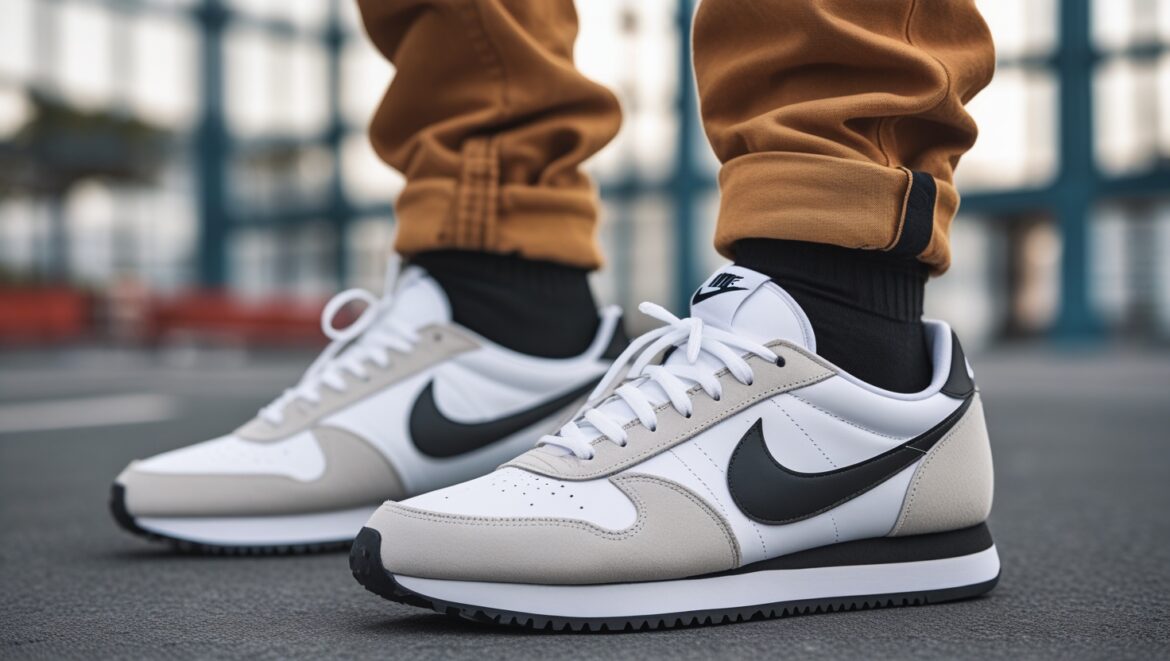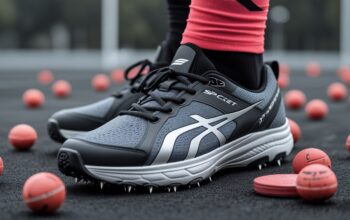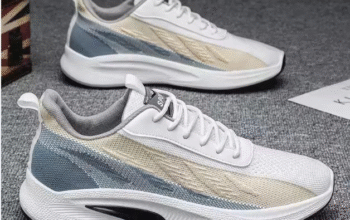
Introduction
Cholo shoes are more than just footwear; they represent a vibrant expression of Chicano culture, history, and identity. Rooted in the streets of Los Angeles, these shoes, particularly the iconic Nike Cortez, have become symbols of pride and resilience. This guide explores the rich history, cultural significance, and styling tips for cholo shoes.
Whether you’re a fashion enthusiast or curious about Chicano heritage, you’ll discover why cholo shoes remain a timeless trend. Join us as we dive into their origins, evolution, and modern-day appeal.
What Are Cholo Shoes?
Cholo shoes are a defining element of the cholo subculture, which emerged among Chicano youth in Los Angeles during the 1960s. The term “cholo,” once a derogatory label for mixed-race individuals, was reclaimed during the Chicano Movement to signify pride in Mexican-American identity.
Cholo shoes, typically white tennis sneakers like the Nike Cortez, are paired with khaki pants, flannel shirts, and long socks. These shoes blend practicality with cultural expression, making them a staple of Chicano streetwear.
The cholo subculture draws inspiration from the Pachuco style of the 1930s and 1940s, known for zoot suits and bold fashion. Cholo shoes, however, became prominent in the 1970s, reflecting a shift toward more accessible, everyday wear.
The Nike Cortez, with its sleek design and affordability, became the go-to choice. Today, cholo shoes remain a powerful symbol of heritage, connecting wearers to their cultural roots while influencing global fashion trends.
The Significance of Footwear in Cholo Culture
Footwear plays a pivotal role in cholo culture, serving as a marker of identity and community. Cholo shoes, particularly the Nike Cortez, are chosen for their comfort, durability, and clean aesthetic, aligning with the subculture’s emphasis on practicality and style.
These shoes often symbolize pride in Chicano heritage, especially for English-speaking youth resisting cultural assimilation. They represent a form of empowerment, allowing wearers to assert their identity in a society that often marginalized them.
However, cholo shoes have faced controversy. In the 1980s and 1990s, law enforcement associated clean white tennis shoes, high socks, and other cholo style elements with gang activity. This led to profiling and criminalization, where wearing cholo shoes could result in unwarranted scrutiny. Despite this, the footwear remains a badge of resilience, embodying the strength of the Chicano community. Today, cholo shoes are celebrated for their cultural significance, transcending negative stereotypes.
Iconic Cholo Shoes
The Nike Cortez is the most iconic cholo shoe, debuting in 1972 as a running shoe designed by Nike co-founder Bill Bowerman. Its thick sole, prominent swoosh, and lightweight design made it ideal for everyday wear, quickly gaining traction in the cholo community.
The Cortez’s affordability and durability resonated with Chicano youth, making it a symbol of cultural pride. Its appearance in films and music videos further cemented its status.
Other cholo shoes include Converse Chuck Taylors, Vans, and Adidas Superstars, each offering a similar blend of style and functionality. These shoes are often styled with long white socks, khaki pants, and flannel shirts, creating a cohesive look.
The Nike Cortez, however, remains the gold standard, with its black-and-white or white-and-red colorways being particularly popular. These shoes are not just fashion; they’re a cultural statement, reflecting Chicano identity and resilience.
| Shoe Brand | Key Features | Popularity in Cholo Culture |
| Nike Cortez | Thick sole, prominent swoosh, lightweight | Iconic, widely worn for affordability and style |
| Converse Chuck Taylors | Canvas upper, rubber toe, classic design | Popular for versatility and retro appeal |
| Vans | Durable canvas, slip-on or lace-up styles | Favored for casual, laid-back aesthetic |
| Adidas Superstars | Leather upper, shell toe, sleek look | Gained traction for modern, clean style |
Evolution of Cholo Shoe Style
Cholo shoe style has evolved significantly since the 1970s. Initially, the Nike Cortez dominated, paired with high socks and khaki shorts, reflecting the subculture’s roots in Los Angeles.
By the 1990s, the style spread to other cities with large Chicano populations, influencing streetwear globally. Films like Mi Vida Loca and music from West Coast rappers brought cholo shoes into the mainstream, making them a fashion staple.
Today, cholo shoes have transcended their subcultural origins, influencing designers and celebrities. Modern variations include colorful Cortez designs and collaborations with artists like Kendrick Lamar.
The style has also inspired other subcultures, such as skateboarding and grunge, which adopt oversized pants and sneakers. Despite these changes, cholo shoes retain their cultural significance, with wearers honoring their heritage while embracing contemporary trends.
How to Style Cholo Shoes
Styling cholo shoes requires a balance of authenticity and personal flair. For a classic look, pair Nike Cortez or Converse with khaki pants, a white tank top, and a flannel shirt buttoned at the top. Add long white socks and a bandana for a traditional vibe. Accessories like gold chains or a thick belt enhance the aesthetic, reflecting cholo culture’s bold style.
For a modern twist, try cholo shoes with slim-fit jeans, a graphic tee, or even a skirt for a gender-neutral approach. The key is to respect the cultural roots while making the look your own. Avoid appropriating the style without understanding its history. Research Chicano culture and engage with the community to ensure your style choices honor the legacy of cholo shoes.
Where to Buy Cholo Shoes
Finding authentic cholo shoes is accessible through various platforms. Online, Nike.com offers a range of Nike Cortez models, from classic black-and-white to modern colorways. ChicanoSpot.com specializes in cholo-inspired fashion, including footwear, celebrating Chicano heritage. For vintage or unique pairs, eBay and Depop are excellent sources, often featuring retro Cortez or Converse styles.
Local Chicano-owned boutiques and cultural events, such as lowrider car shows, are great places to find authentic cholo shoes. Thrift stores in areas with large Chicano communities may also carry vintage finds
When shopping, prioritize quality materials and classic designs to ensure authenticity. Be cautious of counterfeit shoes, which lack the durability and cultural significance of the originals.
FAQs About Cholo Shoes
Q: Are cholo shoes only for gang members?
A: No, cholo shoes are part of Chicano culture and are worn by many who appreciate the style and heritage. While they’ve been linked to gang culture, they’re primarily a fashion statement reflecting pride and identity.
Q: Can anyone wear cholo shoes?
A: Yes, but wearers should approach the style with respect. Understanding the cultural history and avoiding appropriation is crucial to honoring the Chicano community.
Q: Why are Nike Cortez so popular in cholo culture?
A: The Nike Cortez gained popularity for its comfort, affordability, and sleek design. It became a symbol of Chicano pride, widely adopted for its practicality and cultural resonance.
Q: Are there modern alternatives to traditional cholo shoes?
A: Yes, brands like Adidas, Puma, and Reebok offer sneakers with similar aesthetics. However, the Nike Cortez remains the most iconic choice for its historical significance.
Q: How can I ensure I’m buying authentic cholo shoes?
A: Shop from reputable retailers like Nike.com or ChicanoSpot.com. For vintage pairs, check eBay or local thrift stores, ensuring the shoes have quality materials and classic designs.
Conclusion
Cholo shoes, led by the iconic Nike Cortez, are a powerful symbol of Chicano culture, blending style, history, and resilience. From their roots in Los Angeles to their influence on global fashion, these shoes tell a story of pride and identity.
Whether you’re drawn to their cultural significance or timeless aesthetic, cholo shoes offer a unique way to connect with Chicano heritage. Explore authentic styles, support Chicano-owned businesses, and embrace the legacy of cholo shoes today.


